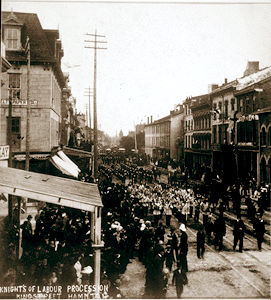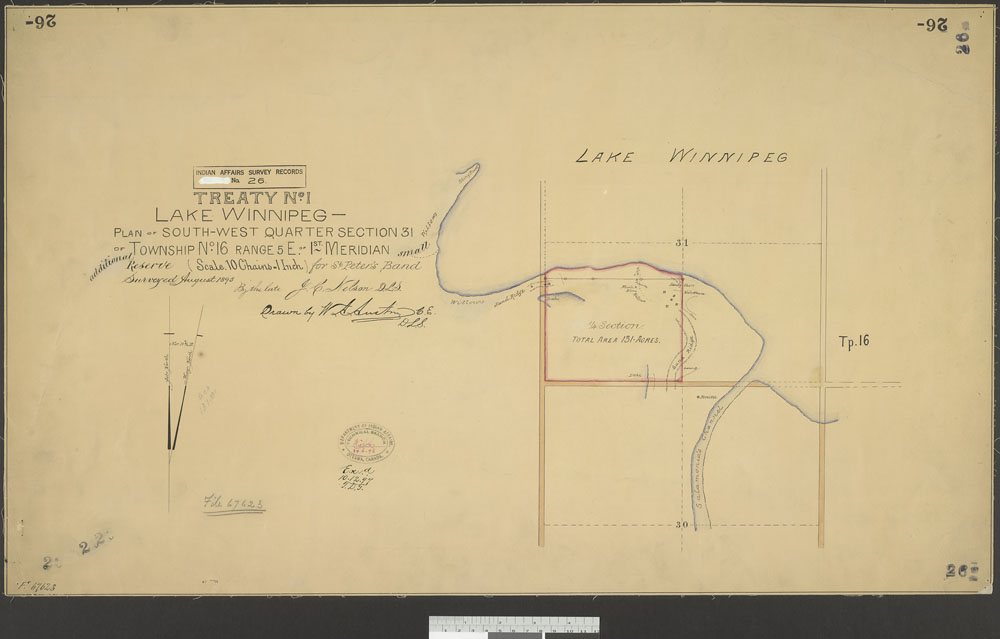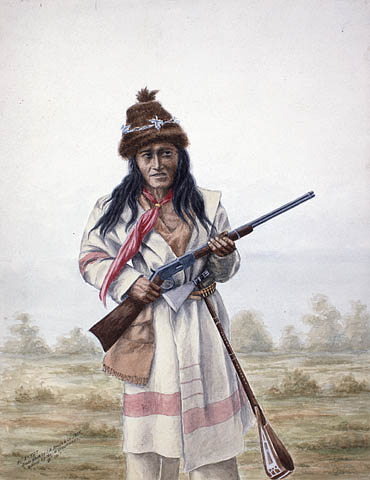Article
Trade Unions
Trade Unions, see WORKING-CLASS HISTORY; UNION CENTRALS; and entries under LABOUR.

Enter your search term
Signing up enhances your TCE experience with the ability to save items to your personal reading list, and access the interactive map.
Create AccountArticle
Trade Unions, see WORKING-CLASS HISTORY; UNION CENTRALS; and entries under LABOUR.
"https://www.thecanadianencyclopedia.ca/images/tce_placeholder.jpg?v=e9dca980c9bdb3aa11e832e7ea94f5d9" // resources/views/front/categories/view.blade.phphttps://www.thecanadianencyclopedia.ca/images/tce_placeholder.jpg?v=e9dca980c9bdb3aa11e832e7ea94f5d9

Article
Founded in 1883, the Trades and Labor Congress of Canada (TLC) was the first union central to take lasting root in Canada. Principally bringing together craft unions, the TLC was the largest workers’ organization in Canada at the turn of the 20th century. The TLC saw its membership fluctuate in the 20th century because of the fierce competition between national and international unions and the rise of industrial unionism. In 1956, the organization merged with the Canadian Congress of Labour to become the Canadian Labour Congress.
"https://d3d0lqu00lnqvz.cloudfront.net/media/media/deaaaf0f-2d04-4ae8-8391-d6255fe2a78a.jpg" // resources/views/front/categories/view.blade.phphttps://d3d0lqu00lnqvz.cloudfront.net/media/media/deaaaf0f-2d04-4ae8-8391-d6255fe2a78a.jpg

Article
The regulation of motor vehicle traffic is one of the greatest legal challenges of the 21st century. Governments make traffic laws and statutes, but common law rules still play an important role.
"https://d3d0lqu00lnqvz.cloudfront.net/media/media/6aeb6bd8-1e59-4ca4-ad8d-d3e76de79920.jpg" // resources/views/front/categories/view.blade.phphttps://d3d0lqu00lnqvz.cloudfront.net/media/media/6aeb6bd8-1e59-4ca4-ad8d-d3e76de79920.jpg

Article
The Tran case (1994) was the first in which the Supreme Court dealt with the right to an interpreter. Tran was accused of sexual assault. At trial, he was assigned an interpreter because he spoke neither French nor English.
"https://www.thecanadianencyclopedia.ca/images/tce_placeholder.jpg?v=e9dca980c9bdb3aa11e832e7ea94f5d9" // resources/views/front/categories/view.blade.phphttps://www.thecanadianencyclopedia.ca/images/tce_placeholder.jpg?v=e9dca980c9bdb3aa11e832e7ea94f5d9

Article
Transport Canada is the federal government department responsible for the regulation and administration of transportation policies, programs and services to promote the safety and efficiency of the national transportation system.
"https://www.thecanadianencyclopedia.ca/images/tce_placeholder.jpg?v=e9dca980c9bdb3aa11e832e7ea94f5d9" // resources/views/front/categories/view.blade.phphttps://www.thecanadianencyclopedia.ca/images/tce_placeholder.jpg?v=e9dca980c9bdb3aa11e832e7ea94f5d9

Article
The 2 major categories of government activities in transportation are administration and development of public policies, which includes the regulation of transport activities and the investment and operation of transport services and facilities.
"https://www.thecanadianencyclopedia.ca/images/tce_placeholder.jpg?v=e9dca980c9bdb3aa11e832e7ea94f5d9" // resources/views/front/categories/view.blade.phphttps://www.thecanadianencyclopedia.ca/images/tce_placeholder.jpg?v=e9dca980c9bdb3aa11e832e7ea94f5d9

Article
The Transportation Association of Canada (TAC) is a non-profit association that provides a neutral forum for discussing technical issues related to road and highway infrastructure and urban transportation. It brings together governments, private companies, academic institutions and other organizations in Canada. The non-partisan association’s mission is “to work together to share ideas, build knowledge, promote best practices, foster leadership, and encourage bold transportation solutions.”
"https://d3d0lqu00lnqvz.cloudfront.net/media/new_article_images/TransportationAssociationofCanada/Ucal-Henri Dandurand.jpg" // resources/views/front/categories/view.blade.phphttps://d3d0lqu00lnqvz.cloudfront.net/media/new_article_images/TransportationAssociationofCanada/Ucal-Henri Dandurand.jpg

Article
Transportation regulation is administered by all levels of government (federal, provincial, municipal) and covers prices, conditions and levels of service, and the operating authority of transport units.
"https://www.thecanadianencyclopedia.ca/images/tce_placeholder.jpg?v=e9dca980c9bdb3aa11e832e7ea94f5d9" // resources/views/front/categories/view.blade.phphttps://www.thecanadianencyclopedia.ca/images/tce_placeholder.jpg?v=e9dca980c9bdb3aa11e832e7ea94f5d9

Article
Treason is probably the oldest and most serious offence in political society, with the possible exception of murder. The earliest English treason legislation, which dates from 1351, is the basis of all treason legislation in the English-speaking world.
"https://www.thecanadianencyclopedia.ca/images/tce_placeholder.jpg?v=e9dca980c9bdb3aa11e832e7ea94f5d9" // resources/views/front/categories/view.blade.phphttps://www.thecanadianencyclopedia.ca/images/tce_placeholder.jpg?v=e9dca980c9bdb3aa11e832e7ea94f5d9

Article
The Treasury Board, the only statutory committee of CABINET (thus formally a PRIVY COUNCIL committee), was created in 1867. The president of the Treasury Board chairs a board which comprises the finance minister and 4 other ministers appointed by the governor-in-council.
"https://www.thecanadianencyclopedia.ca/images/tce_placeholder.jpg?v=e9dca980c9bdb3aa11e832e7ea94f5d9" // resources/views/front/categories/view.blade.phphttps://www.thecanadianencyclopedia.ca/images/tce_placeholder.jpg?v=e9dca980c9bdb3aa11e832e7ea94f5d9

Article
Treaties 1 and 2 were the first of 11 Numbered Treaties negotiated between 1871 and 1921. Treaty 1 was signed 3 August 1871 between Canada and the Anishinabek and Swampy Cree of southern Manitoba. Treaty 2 was signed 21 August 1871 between Canada and the Anishinaabe of southern Manitoba (see Eastern Woodlands Indigenous Peoples). From the perspective of Canadian officials, treaty making was a means to facilitate settlement of the West and the assimilation of Indigenous peoples into Euro-Canadian society (see Treaties with Indigenous Peoples in Canada). Indigenous peoples sought to protect their traditional lands and livelihoods while securing assistance in transitioning to a new way of life. Treaties 1 and 2 encapsulate these divergent aims, leaving a legacy of unresolved issues due to the different understandings of their Indigenous and Euro-Canadian participants.
"https://d3d0lqu00lnqvz.cloudfront.net/media/media/d1c2f761-fbf1-4630-915e-9196456f8635.jpg" // resources/views/front/categories/view.blade.phphttps://d3d0lqu00lnqvz.cloudfront.net/media/media/d1c2f761-fbf1-4630-915e-9196456f8635.jpg

Article
Treaty 10 is the 10th of the 11 Numbered Treaties. It was signed in 1906–07 by the Canadian government and Indigenous peoples in northern Saskatchewan and Alberta. Treaty 10 covers nearly 220,000 km2 of Saskatchewan and Alberta. The terms of Treaty 10 have had ongoing legal and socioeconomic impacts on Indigenous communities.
"https://d3d0lqu00lnqvz.cloudfront.net/media/media/22da8ac5-1905-4c28-ad2e-c9f55c67c7aa.jpg" // resources/views/front/categories/view.blade.phphttps://d3d0lqu00lnqvz.cloudfront.net/media/media/22da8ac5-1905-4c28-ad2e-c9f55c67c7aa.jpg

Article
Treaty 11 is the last of the Numbered Treaties signed on 22 August 1921 between First Nations and the Canadian government following Confederation, as Canada expanded its borders north and west. It covers more than 950,000 km2 of present-day Yukon, Northwest Territories and Nunavut. The First Nations involved were predominately Dene, and include the Gwich’in, Tlicho (Dogrib) and Sahtu. As with other Numbered Treaties, the government did not want to enter into treaty until its interests would be served by doing so; accordingly, Treaty 11 was only created in 1921, after oil and gas prospects in the Mackenzie region sparked its interests. However, hasty negotiations combined with weak implementation of the terms — particularly with regard to reserves and land claims — have led to considerable disagreement between the parties on what was meant by the treaty and which promises have not been fulfilled. As a result, many of the signatories to Treaty 11 have also been involved in the modern treaties process ( see Indigenous Peoples: Treaties).
"https://d3d0lqu00lnqvz.cloudfront.net/media/media/ec35153e-3722-48ad-b760-64812a063ffe.jpg" // resources/views/front/categories/view.blade.phphttps://d3d0lqu00lnqvz.cloudfront.net/media/media/ec35153e-3722-48ad-b760-64812a063ffe.jpg

Article
On 3 October 1873, some Saulteaux peoples (an Ojibwe people) and the Government of Canada signed Treaty 3, also known as the North-West Angle Treaty. This agreement provided the federal government access to Saulteaux lands in present-day northwestern Ontario and eastern Manitoba in exchange for various goods and Indigenous rights to hunting, fishing and natural resources on reserve lands. The terms and text of Treaty 3 set precedents for the eight Numbered Treaties that followed. (See also Treaties with Indigenous Peoples in Canada.)
"https://d3d0lqu00lnqvz.cloudfront.net/media/media/0c20f035-b4ff-4e0a-baad-b18906648db9.jpg" // resources/views/front/categories/view.blade.phphttps://d3d0lqu00lnqvz.cloudfront.net/media/media/0c20f035-b4ff-4e0a-baad-b18906648db9.jpg

Article
Treaty 4 — also known as the Qu'Appelle Treaty — was signed on 15 September 1874 at Fort Qu’Appelle, Saskatchewan. In exchange for payments, provisions and rights to reserve lands, Treaty 4 ceded Indigenous territory to the federal government. The majority of Treaty 4 lands are in present-day southern Saskatchewan. Small portions are in western Manitoba and southern Alberta. (See Numbered Treaties.)
"https://d3d0lqu00lnqvz.cloudfront.net/media/media/2bbbb770-33d9-4635-8dcf-bf1e5e84d4c1.jpg" // resources/views/front/categories/view.blade.phphttps://d3d0lqu00lnqvz.cloudfront.net/media/media/2bbbb770-33d9-4635-8dcf-bf1e5e84d4c1.jpg
